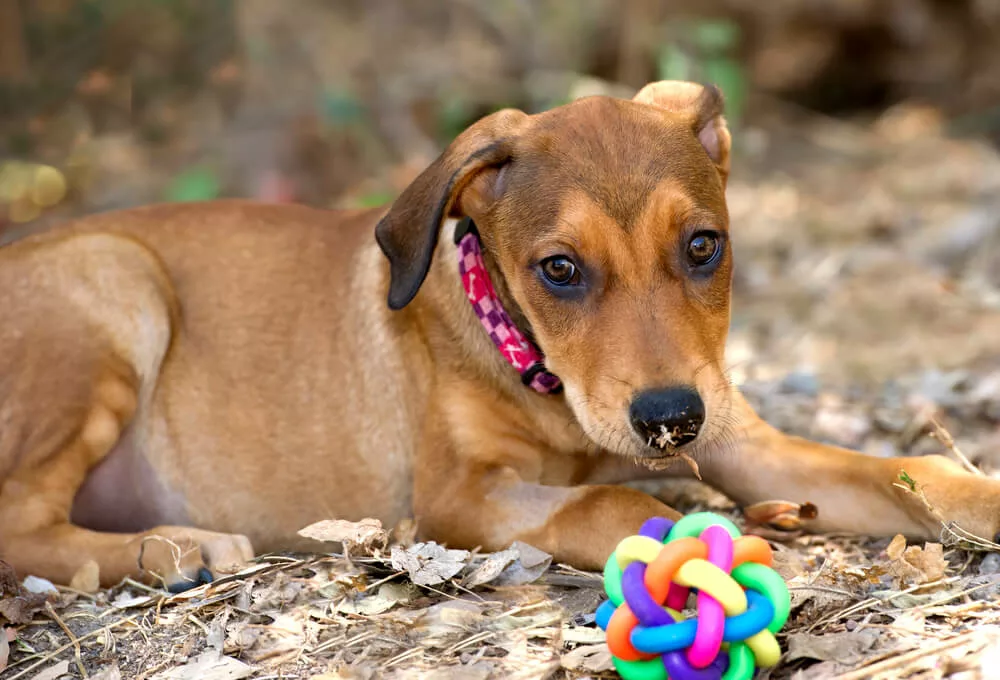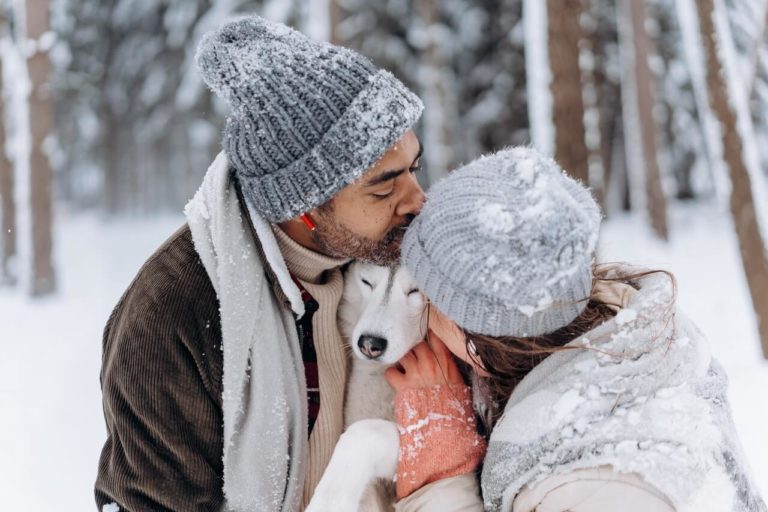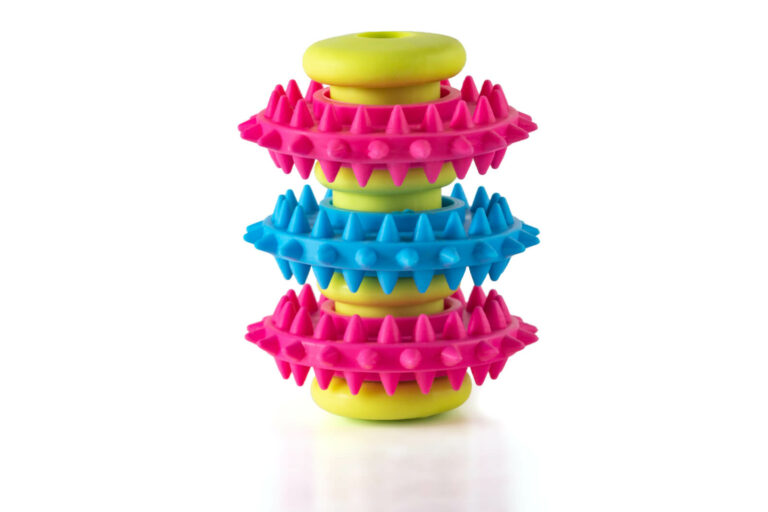Are you struggling to get your furry best friend excited about playtime with toys? You’re not alone. Many pet owners find themselves perplexed as their dogs seem disinterested in toys, despite the apparent benefits of playtime for both physical and emotional well-being. Engaging your dog in playtime is essential for maintaining their health, stimulating their minds, and strengthening the bond between you and your beloved companion.
It’s not uncommon for some dogs to be reluctant to play with their toys, but understanding the reasons behind their lack of enthusiasm can help you address the issue and transform playtime into a fun and rewarding experience for both of you. We’ll explore how to get your dog engaged in playtime with toys, offering practical tips and insights that will have your pup wagging its tail in anticipation. So, join us as we unlock the secrets to reigniting your dog’s passion for playtime, ensuring they stay happy, healthy, and entertained.
Why Your Dog May Not Be Interest In Toys: Understanding and Addressing the Issue
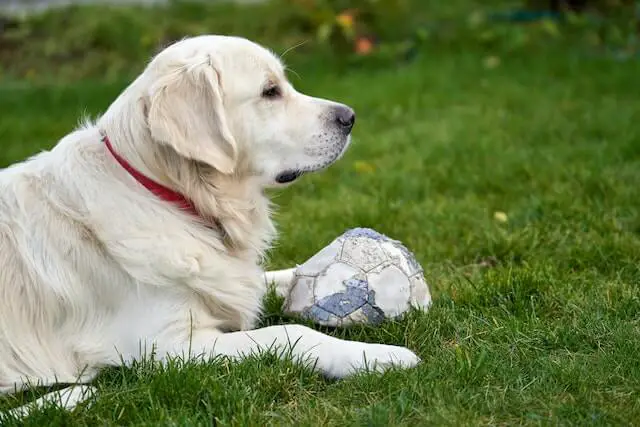
Dogs are known for their playful nature, but sometimes pet owners find themselves puzzled when their furry friends show little to no interest in playtime.
Understanding Your Dog’s Behavioral Needs
To address the issue of your dog not playing with its toys, it’s essential first to understand its behavioral needs. Some possible root causes include:
- Lack of exposure: Dogs who haven’t been exposed to toys from a young age may not understand their purpose or how to interact with them.
- Boredom: If a dog is bored with their current toys, they may lose interest in playtime.
- Preference for other activities: Some dogs may prefer other forms of play, such as chasing, wrestling, or fetch, rather than engaging with toys.
- Medical issues: Pain or discomfort due to an underlying health problem can make a dog less inclined to play.
Identifying the Right Type of Toy for Your Dog
Finding the right toy for your dog can make all the difference in sparking their interest in playtime. Consider the following tips:
- Match the toy to your dog’s size and strength: Ensure the toy is appropriately sized and durable enough for your dog’s breed and chewing strength.
- Appeal to their instincts: Choose toys that cater to your dog’s innate instincts, such as toys that squeak, have a texture similar to prey, or can be filled with treats.
- Offer variety: Provide a range of toys that offer different types of stimulation, such as puzzle toys, rope toys, and interactive toys, to keep your dog engaged and entertained.
- Rotate toys regularly: Rotate your dog’s toys every few weeks to maintain their interest and prevent boredom.
Introducing a New Toy to Your Dog
Successfully introducing a new toy to your dog can help rekindle their interest in playtime. Follow these techniques:
- Introduce the toy during a high-energy moment: Present the new toy when your dog is already in a playful mood, such as during a walk or after a meal.
- Make the toy enticing: Use praise, treats, or even your excitement to make the toy seem more appealing to your dog.
- Engage in interactive play: Encourage your dog to play with the toy by playing tug-of-war, fetch, or other interactive games that involve both you and the toy.
- Reward your dog for interacting with the toy: Praise and reward your dog when they show interest in the toy or engages in play, reinforcing the positive association with the toy.
How Can I Teach My Dog to Like Toys and play with toys?
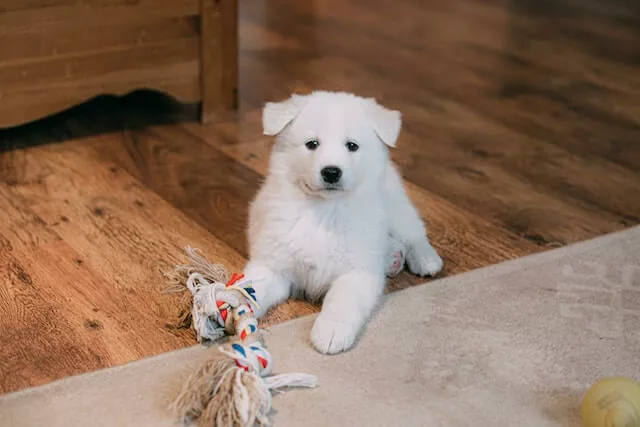
Toys play a crucial role in a dog’s well-being, providing mental stimulation, physical activity, and an opportunity to bond with their owner. However, not all dogs naturally take to toys, leaving pet owners wondering how they can teach their furry friends to enjoy playing with them.
Encouraging Play with Positive Reinforcement
Positive reinforcement is a powerful tool for teaching your dog to play with dog toys and associate it with fun and enjoyment. Follow these tips to get started:
- Choose the right toy: Select a toy that appeals to your dog’s instincts, such as an interactive toy, a treat-dispensing toy, or a toy with a texture that mimics prey.
- Introduce the toy during playtime: Present the toy when your dog is already in a playful mood, such as after a walk or a meal.
- Reward their interest: Praise and reward your dog with treats or affection whenever they show interest in the toy or engage in play.
- Be patient: It may take time for your dog to develop an interest in playtime and toys, so be patient and persistent with your efforts.
Using Toys for Training Purposes
Incorporating toys into your dog’s training routine can help them associate the toy with positive experiences and increase their interest in playing. Consider these techniques:
- Toys as a reward: Instead of treats, use a favorite toy as a reward during training sessions to reinforce good behavior.
- Incorporate toys into obedience training: Integrate toys into activities like fetch and “find it” games to help your dog learn commands while having fun.
- Teach your dog to ‘take’ and ‘drop’: Toys can give you advantage for dog training on these essential commands, which can improve their manners during playtime and make them more interested in playtime.
Playing with Your Dog to Encourage Interest in Their Toys
Your involvement in playtime can make a significant difference in your dog’s engaging with toys. Try these strategies to engage your dog:
- Be enthusiastic: Show excitement when playing with your dog and their toy, using an animated voice and body language to pique their curiosity.
- Engage in interactive play: Play games like tug-of-war, fetch, or hide-and-seek with your dog using their toys to create positive associations and foster bonding.
- Rotate toys: Keep your dog’s interest by rotating their toys every few weeks, ensuring they always have something new and exciting to play with.
By understanding the importance of toys for your dog’s wellbeing and implementing these tips, you can help train your dog to enjoy play time with toys. Remember that each dog is unique, so be patient and tailor your approach to your pet’s specific needs and preferences. With time and persistence, your efforts will pay off, resulting in a happier, healthier, and more engaged furry friend.
What Types of Toys Do Dogs Like?
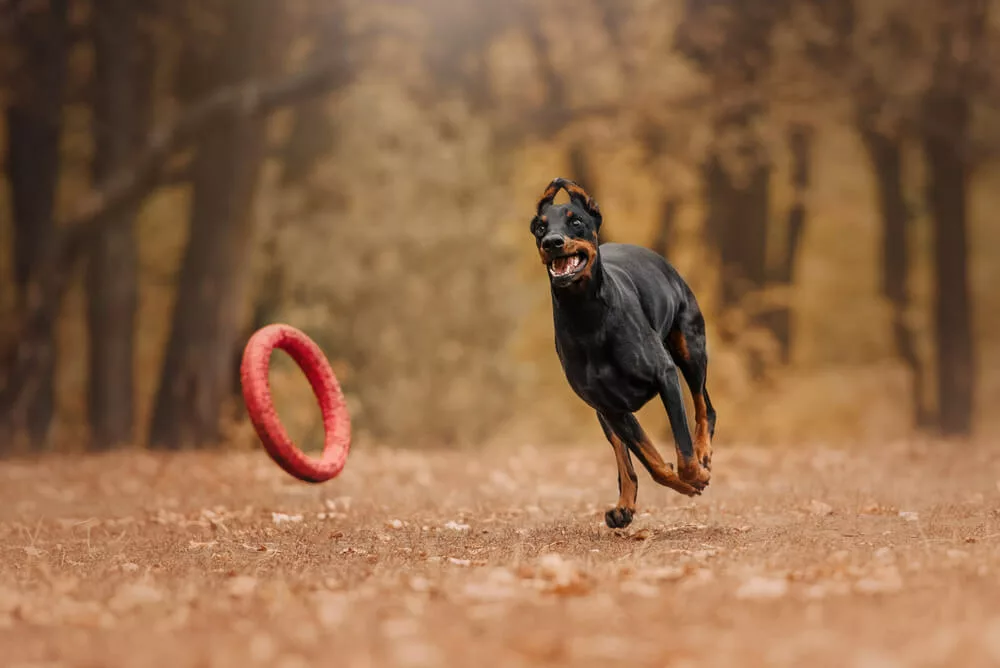
Providing your dog with the right toys not only keeps them entertained but also promotes their mental and physical well-being. With so many options available, it can be challenging to determine which types are most suitable for your dog.
Squeaky Toys: A Favorite Among Many Dogs
Dogs loves squeaky toys are popular among dogs due to their ability to stimulate a dog’s hunting instincts. The high-pitched noise produced when the toy is squeezed mimics the sound of prey, engaging your dog’s natural desire to chase and capture.
Benefits:
- Encourages interactive play
- Stimulates your dog’s hunting instincts
- Provides mental stimulation
When selecting a squeaky dog toy, consider their size, age, and chewing strength. Choose a toy made from durable materials that can withstand your dog’s play style and ensure it is appropriately sized to prevent choking hazards.
Tug Toys: Perfect for Playful Dogs
Tug toys are designed for interactive play between you and your dog, providing an opportunity to bond while engaging in a fun and physical activity. These toys typically consist of ropes or other durable materials that can withstand tugging and pulling.
Benefits:
- Promotes bonding between owner and dog
- Provides physical exercise
- Helps develop coordination and muscle strength
When choosing a tug dog toy, consider your dog’s size and strength. Select a toy made from sturdy materials that can handle the force of your dog’s pull without breaking or causing injury. Be cautious during play to avoid accidentally hurting your dog or encouraging aggressive behavior.
Chew Toys: A Must-Have for Many Dog Owners
Chew toys serve multiple purposes, including providing relief for teething puppies, satisfying a dog’s natural urge to chew, and helping maintain dental health.
Benefits:
- Provides an appropriate outlet for chewing
- Helps maintain dental health by reducing plaque and tartar buildup
- Offers mental stimulation and stress relief
When selecting a chew dog toy, consider your dog’s size, age, and chewing strength. Choose a toy made from non-toxic materials that can withstand your dog’s chewing habits. Monitor your dog during play to ensure they do not ingest any pieces of the toy.
Boosting Your Dog’s Interest in Playtime

Playtime is an essential aspect of your dog’s life, contributing to their physical, mental, and emotional well-being. However, some dogs may not show interest in many toys, making it difficult for owners to engage them in play. Let’s explore practical solutions to increase your dog’s interest in playtime, ensuring a happy and healthy pet.
Creating a Positive Environment for Playtime
To encourage your dog to play with dog toys, it’s crucial to create a safe and engaging environment. Follow these tips to set the stage for successful playtime:
1. Designate a specific play area: Create a designated space in your home where your dog can play with their toys without distractions or hazards.
2. Use positive reinforcement: Praise and reward your dog whenever they show interest in a toy, reinforcing the idea that playing with dog toys is a fun and rewarding activity.
3. Offer choice-based play: Allow your dog to choose which toys they want to play with, giving them control over their play experience.
4. Establish a routine: Set aside regular playtimes throughout the day, so your dog becomes accustomed to engaging with toys during these designated periods.
Using Toys to Enhance Playtime Activities
Selecting the right toys can significantly impact your dog’s interest in playtime. Consider these various kinds of toys to stimulate your dog’s curiosity:
1. Interactive toys: Toys that involve your participation, such as rope toys or fetch toys, can encourage your dog to engage in play.
2. Plush toys: Soft, cuddly toys can offer comfort and companionship to your dog, making them more likely to interact with them.
3. Puzzle toys: Toys that challenge your dog’s cognitive abilities, such as treat-dispensing puzzles, can provide mental stimulation and keep them engaged.
When selecting toys for your dog, consider their age, breed, and personality. Choose toys that cater to their unique interests and instincts, ensuring a higher likelihood of engagement.
Taking Your Dog to a Dog Park to Encourage Playtime
Visiting the neighborhood park with your dog can be a great way to stimulate your dog’s interest in toys and playing. The social environment and interaction with other dogs can inspire your pet to engage in play. Consider these tips when taking your dog to the park:
1. Prepare your dog: Ensure your dog is well-socialized, vaccinated, and has a reliable recall command before visiting a park.
2. Bring appropriate toys: Select toys that are suitable for the park environment, such as durable fetch toys or interactive toys that can be shared with other dogs.
3. Monitor playtime: Keep an eye on your dog and their interactions with other dogs and toys, intervening if necessary to ensure a safe and positive experience.
4. Encourage interaction: Use praise and rewards to reinforce your dog’s positive behavior while playing with toys and interacting with other dogs at the park.
What Should I Do If My Dog Gets Bored with Toys?
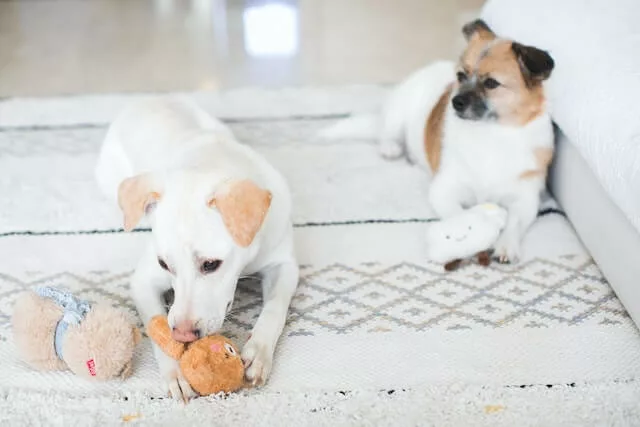
Dogs, just like humans, can get bored with their toys if they are overexposed to a limited selection or if the toys don’t provide enough mental stimulation. As a dog owner, it’s essential to find ways to keep your furry friend engaged and entertained.
Rotating Your Dog’s Toys to Keep Them Interested
Regularly rotating your dog’s favorite toys can help maintain their interest and excitement in playtime. Follow these tips to effectively rotate your dog’s beloved toys:
1. Categorize toys: Divide your dog’s preferred toys into categories, such as chew toys, interactive toys, and plush toys. This will help you ensure that your dog has access to a variety of toy types.
2. Create a rotation schedule: Set up a schedule to rotate your dog’s preferred toys every few weeks. This will keep them engaged and excited about the “new” toys in their collection.
3. Inspect toys for safety: Before reintroducing a toy into the rotation, inspect it for any damage or wear that could pose a safety risk to your dog.
4. Gradual transitions: To prevent separation anxiety, gradually transition between old and new dog toys by having both available for a short period before completely removing the old toy.
Introducing New Dog Toys to Keep Things Fresh
Introducing new dog toys can help keep your dog engaged and entertained. Consider these factors when selecting new dog toys for your furry friend:
1. Consider your dog’s breed, age, and personality: Choose toys that cater to your dog’s unique traits, such as toys designed for heavy chewers or toys that appeal to a specific breed’s instincts.
2. Select various toy materials and formats: opt for toys made from different materials, such as rubber, rope, and plush fabrics, to provide a range of textures and experiences for your dog.
3. Make toys more engaging: Look for toys that incorporate treats, make sounds, or have interactive elements to keep your dog’s interest piqued.
Interactive Playtime for Mental Stimulation
Mental stimulation is crucial for preventing boredom in dogs. Engaging in interactive playtime with your dog can help keep their minds sharp and entertained. Try these interactive games and activities:
1. Fetch: A classic game that provides both physical exercise and mental stimulation. Try using different types of fetch toys, such as balls, frisbees, or even soft toys, to keep things fresh.
2. Hide-and-seek: Hide your dog’s favorite toy or treat in various locations around your home or yard, encouraging them to use their senses and problem-solving skills to find the hidden items.
3. Agility training: Set up an agility course in your backyard or attend a local agility class to challenge your dog’s physical and mental abilities while strengthening your bond.
By rotating your dog’s toys, introducing new and engaging options, and participating in interactive playtime, you can help prevent boredom and ensure a happy, healthy, and entertained furry friend.

